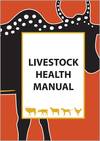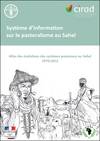Participatory mapping of rangelands has proved to be a vital and powerful information-generating tool for identifying and understanding the use of rangeland resources and access to them. This paper presents a mapping exercise that took place in the Ng’abolo village in Kiteto District in Tanzania.
Year of publication: 2012Organization: Coalition internationale pour l’accès à la terre (ILC)
Topic: Régime foncier
Language: English
Type of document: Technique
Geographical coverage: Afrique orientale
Las regiones áridas ocupan el 41,3% de los continentes, 6,5 millones de kilómetros cuadrados donde habitan unos 2.000 millones de personas, de los cuales 650 millones se encuentran entre los más pobres de los pobres. El 40% de estos territorios es aprovechado por pastores nómadas, el 25% por rancheros, el 12% por agricultores de secano y el 2% de regadío. El pastoreo extensivo desempeña un papel fundamental en la absorción del carbono atmosférico, reduciendo la erosión, conservando el agua, favoreciendo la actividad icrobiana y la incorporación de nutrientes, mejorando la estructura del suelo y su productividad. El manejo adecuado de los pastizales, la plantación de arbolado y las correctas prácticas agrícolas pueden fijar del 10 al 20% de las emisiones globales de combustibles fósiles, por lo que la conservación del pastoreo extensivo se plantea como una de las grandes alternativas para el desarrollo sostenible y la adaptación al cambio climático durante las próximas décadas.
Year of publication: 2012Organization: Auteurs individuels
Topic: Changement climatique, Services environnementaux, Sécurité alimentaire, Innovation, Résilience
Language: Español
Type of document: Technique, Scientifique, Cartes
Geographical coverage: Europe
When considering climate change, marginalized populations and pastoralists, warrant particular attention. Impacts on their territories and communities are anticipated to be both early and severe due to their location in vulnerable environments. Community-based and local knowledge may offer valuable insights into environmental change due to climate change, and complement broader-scale scientific research with local precision and nuance.
This report provides an overview of the published scientific literature (primarily peer-reviewed, but also grey) relating to the contribution of traditional/indigenous knowledge to our understanding of global climate change: observations, impacts, and opportunities for adaptation.
Year of publication: 2012Organization: Auteurs individuels
Topic: Changement climatique, Les savoirs autochtones, Peuples autochtones
Language: English
Type of document: Technique
Geographical coverage: Global
Los países industrializados estamos afectando gravísimamente al medio ambiente de nuestro planeta, comprometiendo el futuro de toda la Humanidad. Es urgente reducir de inmediato nuestras emisiones de CO2 para que comiencen a decrecer antes de 2020, limitándolas a cero antes de 2050 respecto a los niveles de 1990. Para ello los países industrializados debemos modificar radicalmente nuestro modelo energético y nuestras pautas de consumo para intentar mitigar la crisis global que estamos provocando. Pero, junto a la reducción inmediata de las emisiones es necesario fomentar también los sumideros de carbono, que permitan retirar de la atmósfera el exceso de CO2 generado durante este último siglo.
Year of publication: 2012Organization:
Topic: Changement climatique, Sécurité alimentaire, Organisation
Language: Español
Type of document: Bulletins
Geographical coverage: Europe
An interdisciplinary team of researchers from the Health for Animals and Livelihood Improvement (HALI) Project collaborated with pastoralist communities living near the south-eastern border of Ruaha National Park in Tanzania to identify key diseases impacting livestock herd health. This information was then used to create this illustrated livestock health manual. This is particularly useful at the local level where it can be understood by most people in the communities where literacy rates may vary.
Year of publication: 2012Organization: Auteurs individuels
Topic: Économie, Sécurité alimentaire, Value addition
Language: English
Type of document: Technique
Geographical coverage: Afrique orientale
Water development enables the provision of a vital resource to sustain humans, animals and plants in Ethiopia’s arid areas. This report present an overview of water development in Ethiopia’s pastoral regions over the past 40 years.
Year of publication: 2012Organization:
Topic: Sécurité alimentaire, Régime foncier, Services sociaux
Language: English
Type of document: Technique
Geographical coverage: Afrique orientale
This publication presents an analysis of women’s role in the sustainable use, development and conservation of animal genetic resources. The importance of small-scale famers and pastoralists as custodians of these resources is well recognized, but has never previously been disaggregated by gender. The differential roles of men and women have largely been neglected in studies of animal genetic resources management, but by piecing together several strands of argument and indirect evidence it can be concluded that women are the main guardians of livestock diversity.
Global trends in the livestock sector – particularly the shift from subsistence-oriented to market-oriented production, the sedentarization and disintegration of pastoralism, and the emergence of demand for niche market products – are analysed from the perspective of their influence on gender roles in livestock keeping and animal genetic resources management. Likewise, women’s role in the reproductive economy is analysed from the perspective of how this influences the type of livestock they keep.
Case studies from many regions of the world illustrate that while to a degree women acquire their role as guardians of diversity by default because of global trends, many also make an active and conscious contribution to the management of animal genetic resources.
Year of publication: 2012Organization: Organisation des Nations Unies pour l'alimentation et l'agriculture (FAO)
Topic: Services environnementaux, Jeunesse et égalité des sexes
Language: English
Type of document: Technique
Geographical coverage: Global
Depuis une trentaine d’années, l’élevage pastoral sahélien traverse de grands changements institutionnels, socio-économiques, climatiques et agroécologiques qui bouleversent le mode de vie des populations rurales ; celles-ci deviennent de plus en plus vulnérables. Le SIPSA et ses partenaires ont collecté et analysé pour cet atlas des produits informationnels qui corroborent ces tendances évolutives, mais révèlent aussi l’insuffisance de données historiques et d’indicateurs spécifiques qui permettent d’affiner les analyses et de caractériser, anticiper et gérer les crises pastorales. Durant la période 1972-2012, il se dégage les tendances générales.
Year of publication: 2012Organization: Organisation des Nations Unies pour l'alimentation et l'agriculture (FAO), Centre de coopération internationale en recherche agronomique pour le développement (CIRAD)
Topic: Économie, Services environnementaux, Sécurité alimentaire
Language: English, Français
Type of document: Technique, Cartes
Geographical coverage: Afrique occidentale, Afrique centrale









